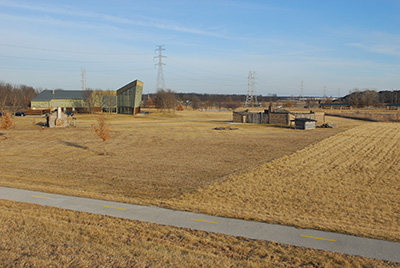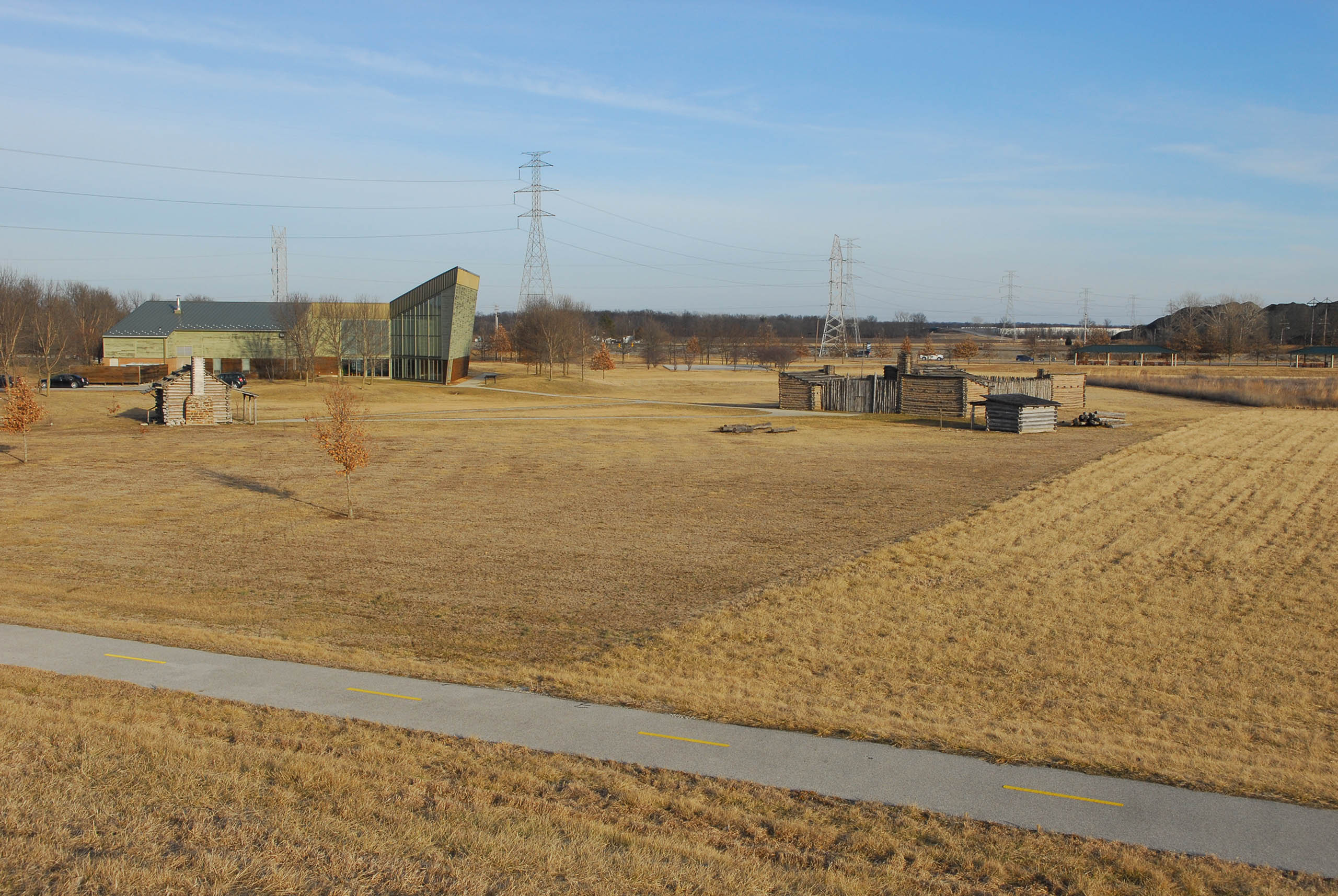



In his 1804 winter journal, Captain Merriwether Lewis wrote of the pending expedition: “The mouth of the River Dubois is to be considered as the point of departure” And so here, in the floodplain directly across from the Missouri and Mississippi confluence, we find the Lewis and Clark Historic Site. The museum is managed by the Illinois Historic Preservation Agency to commemorate Camp River Dubois—the over-winter camp of the Corps of Discovery Expedition from December 1803 to May 1804. The name of the camp—River Dubois (river of the woods)—is a hybrid French/English name of the creek that we now know as Wood River. The Historic Site features a large interpretive center with a full-scale cutaway of a river keelboat (similar to that used on the expedition), as well as a recreation of Camp Dubois elsewhere on the grounds. The camp is staffed by a group known as the “Dubois Detachment”, a dedicated set of volunteers who study and research the life and conditions of the overwinter camp. For those looking for Lewis and Clark memorabilia, the Historic Site also runs the punningly named “Store of Discovery.” The site is the first on the Lewis and Clark National Historic Trail—a 16 state, 4,900 mile ‘trail’ that extends westward from here to Oregon--roughly following the path of the original Corps of Discovery expedition.